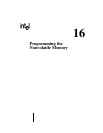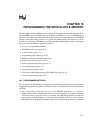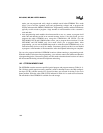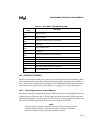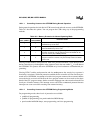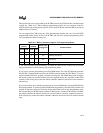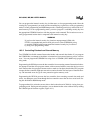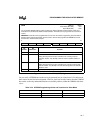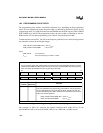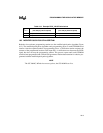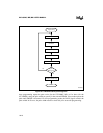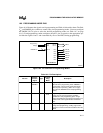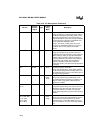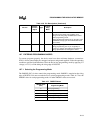
8XC196MC, MD, MH USER’S MANUAL
16-6
You can program the internal security key in either auto or slave programming mode. Once the
security key is programmed, you must provide a matching key to gain access to any programming
mode. For auto programming and ROM-dump modes, a matching security key must reside in ex-
ternal memory. For slave programming mode, you must “program” a matching security key into
the appropriate OTPROM locations with the program word command. The locations are not ac-
tually programmed, but the data is compared to the internal security key.
WARNING
If you leave the internal security key locations unprogrammed (filled with
FFFFH), an unauthorized person could gain access to the OTPROM by using
an external EPROM with an unprogrammed external security key location or
by using slave programming mode.
16.3.2 Controlling Fetches from External Memory
Two UPROM bits disable external instruction fetches and external data fetches. If you program
the UPROM bits, an attempt to fetch data or instructions from external memory causes a device
reset. You can program the UPROM bits using slave or UPROM (8XC196MH only) program-
ming mode.
Programming the DEI bit prevents the bus controller from executing external instruction fetches.
An attempt to load the slave program counter with an external address causes the device to reset
itself. Because the slave program counter can be as much as four bytes ahead of the CPU program
counter, the bus controller might prevent code execution from the last four bytes of internal mem-
ory. The automatic reset also gives extra protection against runaway code.
Programming the DED bit prevents the bus controller from executing external data reads and
writes. An attempt to access data through the bus controller causes the device to reset itself. Set-
ting this bit disables ROM-dump mode.
To program these bits, write the correct value to the location shown in Table 16-4 using slave pro-
gramming mode. During normal operation, you can determine the values of these bits by reading
the UPROM special-function register (Figure 16-1).




